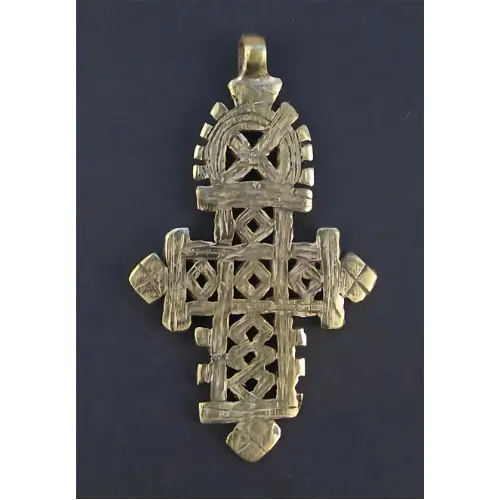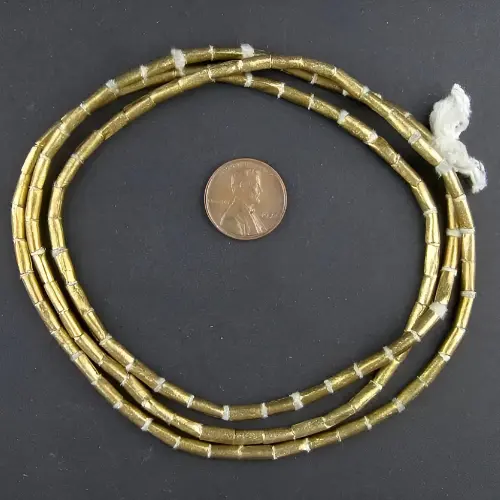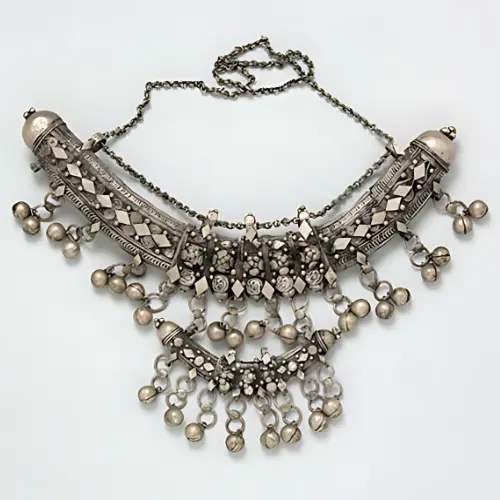
Ethiopian jewelry stands as a testament to the country's rich cultural heritage, blending ancient traditions with intricate craftsmanship to create stunning pieces that reflect the diversity and vibrancy of Ethiopian culture. From the bold colors of traditional tribal adornments to the intricate filigree work of Christian crosses, Ethiopian jewelry captures the essence of the nation's history and identity. Join us as we embark on a journey through the fascinating world of Ethiopian jewelry.
A Tapestry of Tradition

Nestled in the Horn of Africa, Ethiopia boasts a rich cultural tapestry celebrated globally. Yet, amidst its famed Olympic champions, rock-hewn churches, and coffee legacy lies a lesser-known treasure: its captivating jewelry tradition. Ethiopian adornments aren't just about aesthetics; they serve as cultural touchstones deeply embedded in everyday life.
Ethiopian jewelry mirrors the nation's diverse heritage, with each region offering distinct styles and techniques. In rural areas, tribal jewelry holds sway, not merely as embellishments but as markers of identity, status, and cultural belonging. Crafted from silver, gold, copper, and beads, these pieces boast vibrant colors, intricate patterns, and symbolic motifs.
From the elaborate metalwork of the Afar and Borana peoples to the vibrant beadwork of the Oromo and the ornate headdresses of the Hamar and Mursi tribes, Ethiopian jewelry narrates tales of belief, ritual, and tradition. Each piece serves as a cultural artifact, encapsulating the essence of the communities from which they originate.
Beyond mere adornments, Ethiopian jewelry embodies a living heritage, preserving centuries-old customs and beliefs. As such, these treasures stand not only as symbols of beauty but also as guardians of Ethiopia's rich cultural legacy, cherished by its citizens and admired by the world.
Materials used

Ethiopian jewelry stands out for its intricate designs, blending the nation's dynamic history with modern influences. Crafted with meticulous skill, artisans utilize traditional materials like silver, gold, bronze, ivory, amber, precious stones, and beads to create a stunning array of adornments, including necklaces, bracelets, earrings, crosses, and amulets. These materials hold deep symbolic significance within various ethnic groups, with amber, for instance, believed to ward off illness and misfortune while possessing healing properties.

Gold, in particular, holds a special place in Ethiopian jewelry traditions, dating back to the illustrious Empire of Axum. Historical records reveal its multifaceted use, from jewelry to decorative objects. Throughout Ethiopian history, gold has been synonymous with pride, prestige, beauty, wealth, and self-worth. Consequently, gold jewelry remains highly coveted and is often exchanged as gifts during weddings, graduations, baptisms, and ceremonial events.
Archaeological excavations in Axum and Adulis, the Empire's capital and Red Sea Port respectively, have unearthed numerous gold coins and luxurious items, underscoring the enduring allure and significance of gold within Ethiopian society.
Religious Symbolism

The evolution of Ethiopian jewelry is deeply intertwined with the country's religious diversity, influenced by the interplay of Christianity, Islam, and Judaism. Across these faiths, distinct styles and symbols emerge, reflecting the beliefs and traditions of each community.
Christianity, with its roots dating back to the 4th century in Ethiopia, has left a significant mark on Ethiopian jewelry. Cross-pendants became iconic symbols of faith, worn by believers to express their religious identity. These crosses, such as the revered "processional cross" or "cross of Lalibela," are crafted with intricate filigree work, symbolic motifs, and religious inscriptions, serving as potent symbols of faith, protection, and spiritual connection.
Similarly, Islamic influences are evident in bridal necklaces worn by Muslim women and prayer beads used during Muslim prayers. These pieces carry cultural significance and serve as expressions of devotion within the Muslim community.
Moreover, Ethiopian jewelry reflects social hierarchies and marital statuses within certain tribes, serving as markers of identity and status within family and community systems. Talismanic pendants also reveal influences from Indian and Arabic traditions, showcasing the diverse cultural tapestry of Ethiopia.
In essence, Ethiopian jewelry is a reflection of the country's religious, cultural, and social dynamics, embodying centuries-old traditions and beliefs while embracing influences from diverse faiths and cultures.
Ethiopian jewelry encompasses diverse styles, each distinct in materials and craftsmanship:

1. Artisan-crafted jewelry: Fashioned from gold, silver, brass, or copper by skilled smiths.
2. Coarse metal adornments: Created using materials like brass, copper, iron, aluminum, and nickel.
3. Beaded jewelry: Adorned with opals, precious stones, and intricate beadwork.
4. Natural material ornaments: Incorporating wood, shells, ivory, horn, nuts, seeds, hair, leather, and grass for unique and organic designs.
Contemporary Revival

In recent years, Ethiopian jewelry has experienced a revival, with artisans blending traditional techniques with contemporary designs to create unique and innovative pieces. Designers draw inspiration from Ethiopia's rich cultural heritage, incorporating elements such as traditional motifs, materials, and techniques into modern jewelry collections.
Ethiopian jewelry has also gained international recognition, with designers showcasing their creations on the global stage and attracting a growing audience of collectors and enthusiasts. This renewed interest in Ethiopian jewelry not only preserves traditional craftsmanship but also celebrates the country's cultural identity and promotes economic empowerment within local communities.
Embracing Diversity
Ethiopian jewelry serves as a celebration of the country's cultural diversity, reflecting the rich tapestry of traditions, beliefs, and customs that define Ethiopian society. Whether worn as a symbol of identity, a form of religious devotion, or a statement of personal style, these exquisite pieces carry with them the stories and traditions of generations past.
In conclusion, Ethiopian jewelry is more than just decorative adornments; it is a reflection of Ethiopia's rich cultural heritage and a celebration of its vibrant identity. From tribal treasures to religious relics, these pieces embody the spirit of a nation steeped in tradition, creativity, and resilience.
You May Also Like:
EXPLORING THE TIMELESS BEAUTY OF RENAISSANCE JEWELRY
EXPLORING THE RICH SYMBOLISM OF THE RUSSIAN ORTHODOX CROSS
GAYATRI DEVI: THE ICONIC QUEEN WHO EMBODIED GRACE AND RESILIENCE







